 The Magnificent Seven
The Magnificent Seven
Dir: Antoine Fuqua
Starring: Denzel Washington, Chris Pratt, Ethan Hawke, Vincent D’Onofrio, Byung-hun Lee, Manuel Garcia-Rulfo, Martin Sensmeier, Luke Grimes, Peter Sarsgaard, and Haley Bennett
In 1960 veteran director John Sturges was tasked with taking some of the most recognizable actors in Hollywood and collaborating on an updated remake of an Akira Kurosawa film called “Seven Samurai”. That film would become the classic western “The Magnificent Seven”. The film starred Yul Brynner who was coming off two lauded films, “The Ten Commandments” and “The King and I”. It also starred the experienced, yet not established, Steve McQueen who would later make “The Great Escape” and “Bullitt”. Rounding out the film was Charles Bronson, Eli Wallach, Robert Vaughn, Brad Dexter, and James Coburn. Not a bad cast to make a movie with during this time.
While the 1960 version of the film was done only six years after Akira Kurosawa’s classic, it should be noted that the Japanese master filmmaker approved of Mr. Sturges western, director Antoine Fuqua is tasked with updating this film fifty-six years after the original film was released. Mr. Kurosawa is one of the most influential filmmakers in history, his film “Seven Samurai” has been copied, remade, and updated hundreds of times. How could an updated version of a film, which was already a remake, work in today’s remake saturated film world? Because stories of good versus evil and the journey of heroes facing insurmountable odds can still be an interesting element when done the right way, even when it’s been done so many times that even the most novice of film fan can see the path of the story a mile away. The 2016 version of “The Magnificent Seven” is entertaining and fun many times throughout; it's as mediocre of a popcorn movie as one could be.
The small town of Rose Creek, populated with hard working families, is under the brutal control of a greedy industrialist named Bartholomew Bogue (Peter Sarsgaard). Faced with the option of leaving town or meeting death, the townspeople employ the services of a bounty hunter named Chisolm (Denzel Washington). Needing more help than the townspeople can offer, Chisolm employs the services of six other men; a gambler named Faraday (Chris Pratt), an outlaw named Vasquez (Manuel Garcia-Rulfo), a famous gunman named Goodnight Robicheaux (Ethan Hawke) and his knife-wielding associate Billy Rocks (Byung-hun Lee), a famous hunter named Jack Horne (Vincent D’Onofrio), and a lone Native American named Red Harvest (Martin Sensmeier).
While the locations and characters have changed just a bit with Antoine Fuqua's version of the film, the structure to the original films that have come before it are still very much intact. Justice needs to be served and the innocent need to be protected. Mr. Fuqua does a great job introducing these characters, even the villain who is offered the very first introduction is provided a startling and violent scene that makes the viewer despise him. This helps warrant the vigilante mentality of getting bounty hunters, gamblers, and outlaws together to fight the good fight. Still, Mr. Fuqua does not shy away from displaying the character flaws of some of the seven justice seeking men, specifically with group leader Chisolm who plays all of his emotional cards close to the chest.
Denzel Washington is great, he provides a swagger and charisma that shines brightest when the actor is allowed to move within a scene. Mr. Washington doesn't need to say much but the little mannerisms that the actor brings adds a sense of mystery, and also danger, with every deliberate move. Chris Pratt provides much of the humor, the actor is best when he is allowed freedom with the character but he also brings a natural likability to a character that isn't the most righteous of the group. Another standout in the film is Ethan Hawke who plays a prideful but tormented gunfighter. The talented Mr. Hawke has a knack for making these kind of secondary characters better than they should be.
Mr. Fuqua composes a film that is entertaining and fun, a film that goes the extra mile with characters and scenarios to make it a crowd pleasing experience. However, this also moves the film far away from being anything remotely memorable, in fact in some instances it makes the film rather boring. It's no better than the western made in 1960 except for supplying more action scenes and the narrative is so straightforward that all the brilliant touches of character development and narrative composition found in Akira Kurosawa's original work is mostly glossed over. So yes, many will be entertained and many will have a great time with this film, however some may find themselves wondering why they bothered remaking it at all?
Monte's Rating
3.25 out of 5.00

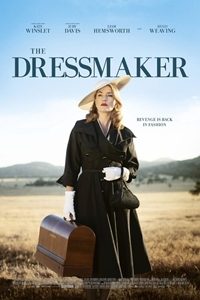 ‘The Dressmaker’ needs some alterations
‘The Dressmaker’ needs some alterations
 ‘Storks’ delivers a fun animated experience
‘Storks’ delivers a fun animated experience
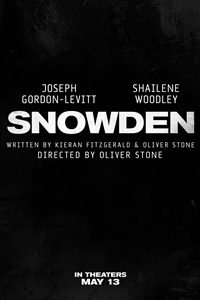 Oliver Stone’s ‘Snowden’ is a valuable ‘Citizenfour’ companion piece
Oliver Stone’s ‘Snowden’ is a valuable ‘Citizenfour’ companion piece
 Blair Witch
Blair Witch
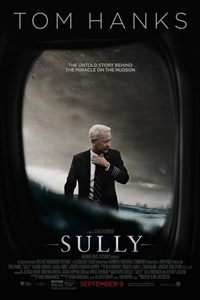 Hollywood legend Clint Eastwood’s 35th directorial effort, “Sully” (3/4 stars), arrives in theatres on Friday, Sept. 9 with Tom Hanks in the title role. The film chronicles U.S. Airways pilot Chesley ‘Sully’ Sullenberger’s heroic landing on the Hudson River in January 2009. With another solid Eastwood film in theatres, this seems like a perfect time reflect upon his work. Although I would love to compile a Top 20, 17 or 15 list, my pragmatic nature and movie critic tendencies “require” me to somehow limit the number of movies to 10, so here are my Top 10 films directed by Clint Eastwood.
Hollywood legend Clint Eastwood’s 35th directorial effort, “Sully” (3/4 stars), arrives in theatres on Friday, Sept. 9 with Tom Hanks in the title role. The film chronicles U.S. Airways pilot Chesley ‘Sully’ Sullenberger’s heroic landing on the Hudson River in January 2009. With another solid Eastwood film in theatres, this seems like a perfect time reflect upon his work. Although I would love to compile a Top 20, 17 or 15 list, my pragmatic nature and movie critic tendencies “require” me to somehow limit the number of movies to 10, so here are my Top 10 films directed by Clint Eastwood.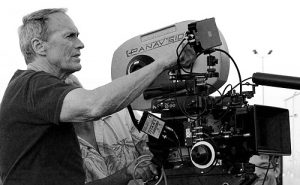 some Union fighters burn his house and kill his wife and son. With nothing to live for, he joins a group of Confederates, and soon after, he finds himself on his own and an outlaw. In a film that truly showcases everything about the American Western, Wales covers a winding story from Missouri to Texas and partners with – at various times – a teenager, two Native Americans and a family from Kansas. Eastwood mixes good fun with plenty of gunfights, as Wales offers a barrel full of memorable lines, countless visuals of his chewing tobacco spit, dead bodies in his wake, and - possibly - a reason to live.
some Union fighters burn his house and kill his wife and son. With nothing to live for, he joins a group of Confederates, and soon after, he finds himself on his own and an outlaw. In a film that truly showcases everything about the American Western, Wales covers a winding story from Missouri to Texas and partners with – at various times – a teenager, two Native Americans and a family from Kansas. Eastwood mixes good fun with plenty of gunfights, as Wales offers a barrel full of memorable lines, countless visuals of his chewing tobacco spit, dead bodies in his wake, and - possibly - a reason to live.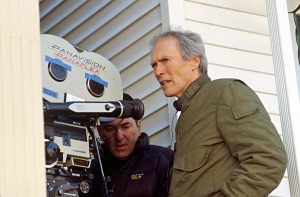 convict from a Huntsville, Texas prison. On the morning after Halloween in 1963, Butch (Costner) and another con kidnap an 8-year-old boy named Phillip (T.J. Lowther). After Butch dumps his partner, the two drive across the state with Texas Ranger Red Garnett (Eastwood) on their tail. The movie volleys between Red and Butch, and it soon concocts a semi-case of Stockholm syndrome for Phillip and the audience. Butch treats Phillip with esteem and kindness, so Costner does not wind up playing a complete bad guy, but Red is an empathetic figure as well. With an occasional protagonist and a fulltime protagonist on opposite sides of the law, “A Perfect World” reminds us that we do not live in one.
convict from a Huntsville, Texas prison. On the morning after Halloween in 1963, Butch (Costner) and another con kidnap an 8-year-old boy named Phillip (T.J. Lowther). After Butch dumps his partner, the two drive across the state with Texas Ranger Red Garnett (Eastwood) on their tail. The movie volleys between Red and Butch, and it soon concocts a semi-case of Stockholm syndrome for Phillip and the audience. Butch treats Phillip with esteem and kindness, so Costner does not wind up playing a complete bad guy, but Red is an empathetic figure as well. With an occasional protagonist and a fulltime protagonist on opposite sides of the law, “A Perfect World” reminds us that we do not live in one.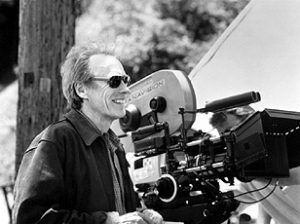 – Sean Penn and Tim Robbins won Oscars for Best Actor and Best Supporting Actor, respectively, in Eastwood’s dark crime tale filled with massive Shakespearean themes, when three childhood friends’ (Penn, Robbins and Kevin Bacon) lives intersect as adults under brutal circumstances. In chilly Boston, a coed is found dead, and the three previously-mentioned men approach the incident from very different perspectives, while the tightly-wound and complicated murder investigation pushes forward. An all-star cast – including, Laurence Fishburne, Marcia Gay Harden and Laura Linney – complete a mesmerizing experience which brings constant thoughts friendships, loyalties and how the sins of the past impact the present. The film’s most memorable line – “The last time I saw Dave” - will haunt you for years.
– Sean Penn and Tim Robbins won Oscars for Best Actor and Best Supporting Actor, respectively, in Eastwood’s dark crime tale filled with massive Shakespearean themes, when three childhood friends’ (Penn, Robbins and Kevin Bacon) lives intersect as adults under brutal circumstances. In chilly Boston, a coed is found dead, and the three previously-mentioned men approach the incident from very different perspectives, while the tightly-wound and complicated murder investigation pushes forward. An all-star cast – including, Laurence Fishburne, Marcia Gay Harden and Laura Linney – complete a mesmerizing experience which brings constant thoughts friendships, loyalties and how the sins of the past impact the present. The film’s most memorable line – “The last time I saw Dave” - will haunt you for years.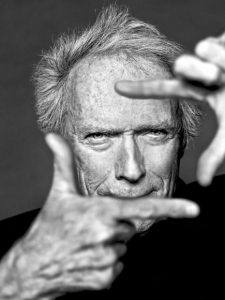 Best Director, Best Supporting Actor for Gene Hackman, and Best Film Editing and proved – along with “Dances with Wolves” (1990) – that the genre can win the Academy’s top prize. Eastwood delivers a prized role as well as William Munny, an aging cowboy who takes one last bounty hunter job after years of living a clean life. Munny frequently speaks of his violent past, but the audience presently sees a cordial and respectful man, so any previous sinister dealings seem either deeply buried or simply exaggerated. In the movie’s final act, however, Sheriff Little Bill Daggett (Hackman) tests Munny’s patience with potentially explosive consequences. Most everything in the town of Big Whiskey, Wyo. (actually filmed in Alberta, Canada) feels bleak and cold, and the tones match Munny’s job of attempting to kill two cowboys for a group of prostitutes. In this world, no one is completely innocent, and Munny mentions to one of his partners in passing, “We all have it coming, Kid.” Not only does Little Bill have it coming, but so does the Kid, the targeted cowboys, Munny’s other partner named Ned (Morgan Freeman), and Munny himself. Munny’s past sins – unfortunately – are just skin-deep, and even though his wife forgave his past misdeeds, to him, they remain unforgiven.
Best Director, Best Supporting Actor for Gene Hackman, and Best Film Editing and proved – along with “Dances with Wolves” (1990) – that the genre can win the Academy’s top prize. Eastwood delivers a prized role as well as William Munny, an aging cowboy who takes one last bounty hunter job after years of living a clean life. Munny frequently speaks of his violent past, but the audience presently sees a cordial and respectful man, so any previous sinister dealings seem either deeply buried or simply exaggerated. In the movie’s final act, however, Sheriff Little Bill Daggett (Hackman) tests Munny’s patience with potentially explosive consequences. Most everything in the town of Big Whiskey, Wyo. (actually filmed in Alberta, Canada) feels bleak and cold, and the tones match Munny’s job of attempting to kill two cowboys for a group of prostitutes. In this world, no one is completely innocent, and Munny mentions to one of his partners in passing, “We all have it coming, Kid.” Not only does Little Bill have it coming, but so does the Kid, the targeted cowboys, Munny’s other partner named Ned (Morgan Freeman), and Munny himself. Munny’s past sins – unfortunately – are just skin-deep, and even though his wife forgave his past misdeeds, to him, they remain unforgiven. This Crusoe story, ‘The Wild Life’, is visually pleasant but feels lost
This Crusoe story, ‘The Wild Life’, is visually pleasant but feels lost
 Complete Unknown
Complete Unknown
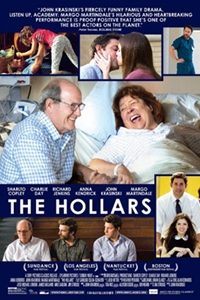 Two solid performances cannot stop ‘The Hollars’ from feeling hollow
Two solid performances cannot stop ‘The Hollars’ from feeling hollow
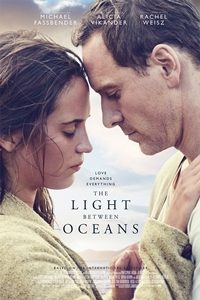 The emotional, beautifully-filmed ‘The Light Between Oceans’ had me at G’day
The emotional, beautifully-filmed ‘The Light Between Oceans’ had me at G’day
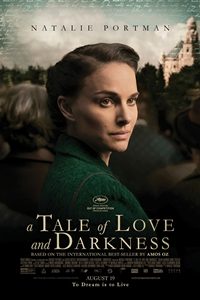 Natalie Portman shines as a master storyteller in “A Tale of Love and Darkness”
By Kaely Monahan
Natalie Portman shines as a master storyteller in “A Tale of Love and Darkness”
By Kaely Monahan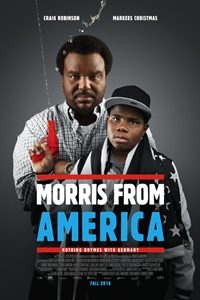 ‘Morris from America’ is a coming-of-age Christmas gift
‘Morris from America’ is a coming-of-age Christmas gift
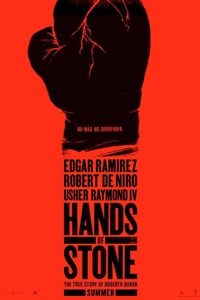 Hands of Stone
Hands of Stone
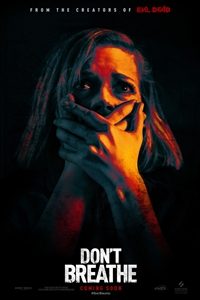 Don’t Breathe
Don’t Breathe
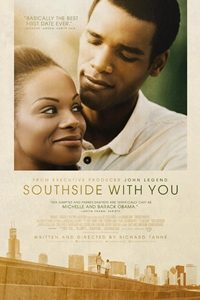 ‘Southside with You’ recalls a very important first date
‘Southside with You’ recalls a very important first date
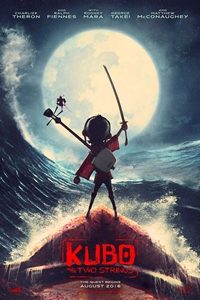 Kubo and the Two Strings – The must-see summer animated feature
By Kaely Monahan
Kubo and the Two Strings – The must-see summer animated feature
By Kaely Monahan Ben-Hur
Ben-Hur
 ‘War Dogs’ carries plenty of comedic and dramatic bite
‘War Dogs’ carries plenty of comedic and dramatic bite








